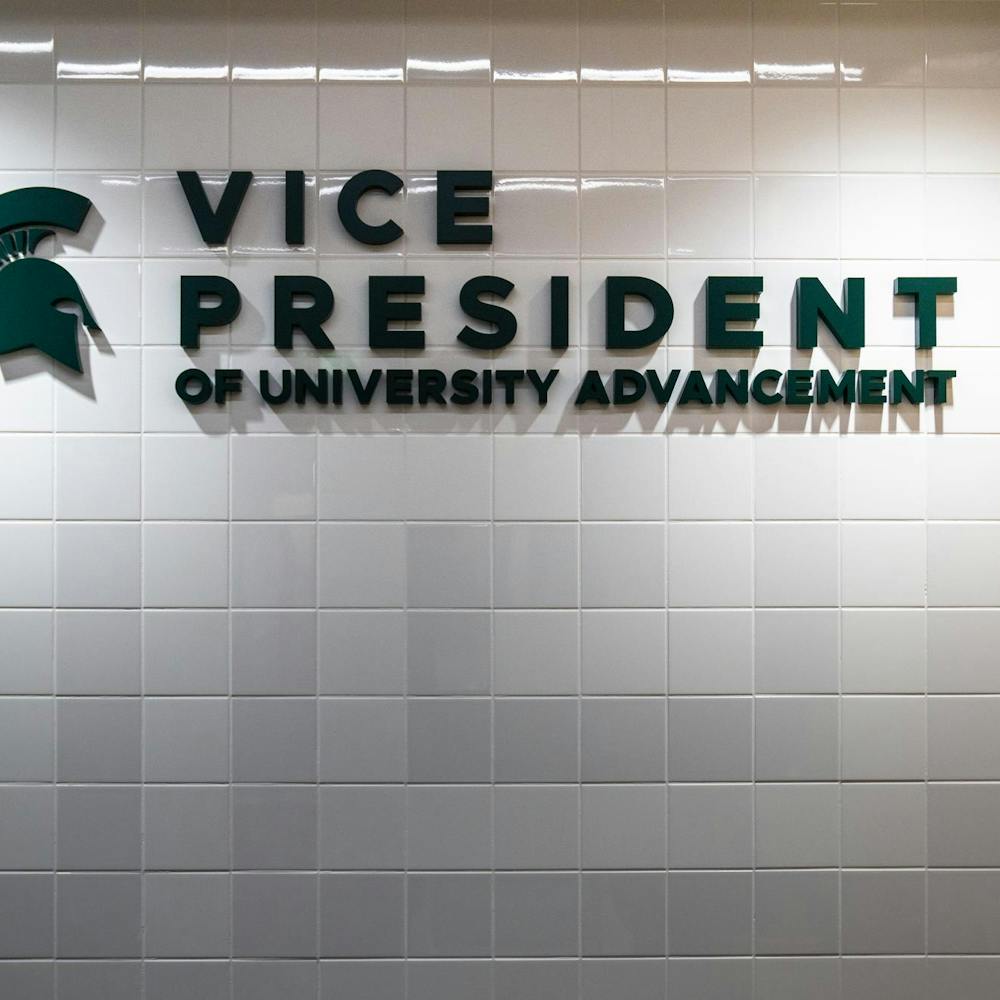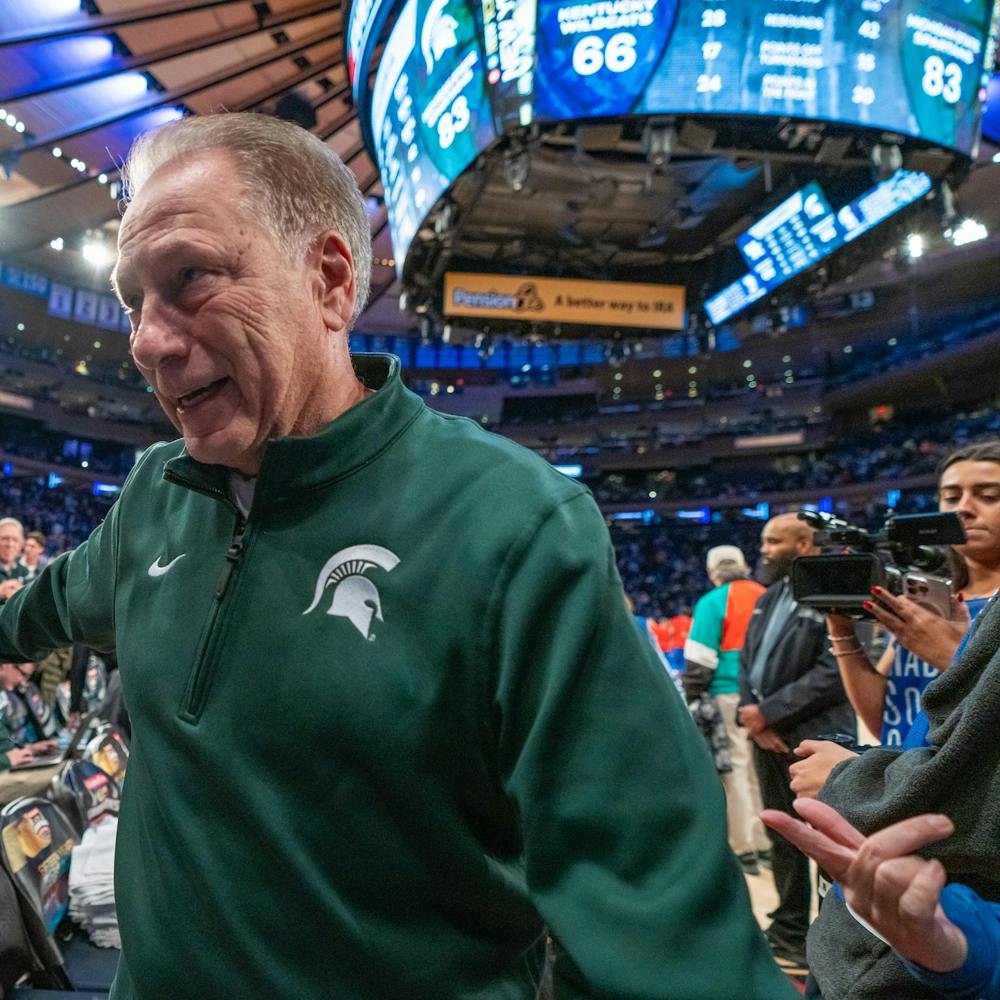Last month, Gov. Jennifer Granholm stood in the middle of a field in East Lansing and spoke wonderfully of MSU's role at the forefront of biofuel research, thanks to the largest research grant ever. The sky was blue, the grass was green, people cheered and I wondered.
I don't mean to downplay the significance of the Great Lakes Bioenergy Research Center; MSU's $50 million involvement in researching sources of alternative energy is something to celebrate. The center holds the potential to develop technologies Director Ken Keegstra hopes will lead to "energy independence for the United States 10 years down the road." But I can't help but wonder if MSU has allowed the possibilities of tomorrow to overshadow the small steps it can take today in promotion of a more responsible energy policy.
Let me give you an example: In the four years I have been on campus, I have never seen a true MSU police car. Every officer seems to drive the same sport utility vehicle. Does every officer on the force need to cruise around in the same fuel-inefficient vehicle?
On July 15, The Detroit Free Press had an article on a police car that recently started patrolling Wayne State University. Heads turn when a Wayne State police officer rolls by in his new Mercedes-Benz A-Class, and it isn't all due to its slick, European styling. The excitement comes from something deeper - the hydrogen-fueled electric motor under its hood.
It's the only fuel-cell police car in the world on active patrol. The technology behind the new flagship of the Wayne State University Police Department is still being developed, but while the high production cost and limitations of the car's range and top speed (100 miles and 85 mph) make it an impractical replacement for Wayne State's entire fleet, the perks of having the new A-Class are striking.
Wayne State's fuel-cell patrol car sends a great message. When announcing MSU's role in the Great Lakes Bioenergy Research Center, MSU President Lou Anna K. Simon reminded us of how "Universities are for the future, to worry about not only today's problems but also tomorrow's."
Wayne State has declared this same ideal, but instead of tucking it in an out-of-sight laboratory, they flaunt it as an attraction and point of local pride. I'm glad MSU is committed to researching alternative fuel options. It assures me people are thinking already about the next steps that need to be taken. However, I'm glad Wayne State hasn't forgotten to live in the moment.
Since the press release last month, MSU has quieted down once more, and it's easy to forget the effort going into research, so I can move beyond expensive trips to the pump and high emissions. Wayne State reminds me of work being done and the progress already made.
It's nice, when I'm frustrated at the price of gas, to hear of a vehicle that costs a mere $1.50 to fill up with hydrogen. The new squad car can get 60 miles to a kilogram of hydrogen while still accelerating to 85 mph - that's pretty good. Wayne State reminds me of the advancements already made and helps my patience as I wait for my own fuel-cell powered car. It's a message of hope; a little bit of the future right before my present eyes.
If nothing else, Wayne State's new car offers a better message than the one I get when I look at MSU police in their outdated SUVs. All that says to me is "Yes, we're working on moving beyond these old dinosaurs you see, but that will take years. Until then, we're just going to go right on contributing to the problem."
We can join with Wayne State and the growing list of cities and municipalities with a small fleet of hydrogen cars. DaimlerChrysler has hydrogen cars working for the city of Farmington Hills, and Ford Motor Co. has loaned 30 cars to Taylor and Ann Arbor. Honda has similar vehicles scattered throughout New York and California, and cars just like Wayne State's help parking attendants write tickets along Las Vegas' famous strip.
Car companies are able to test new technology in real world environments, and the cities and universities involved benefit from the positive publicity that comes with moving forward environmentally. I'm sure a well-known research university like MSU could talk a car company into helping it become involved. Wouldn't that be great - to be able to say not only is MSU involved in the solutions of tomorrow but also in the developments of today?
I agree with MSU President Lou Anna K. Simon. MSU should continue to work toward a better future, but also it should remember no one can ever change tomorrow without dealing with today first.
Chris Matus is an MSU English and social relations senior and a State News columnist. Reach him at matuschr@msu.edu.





